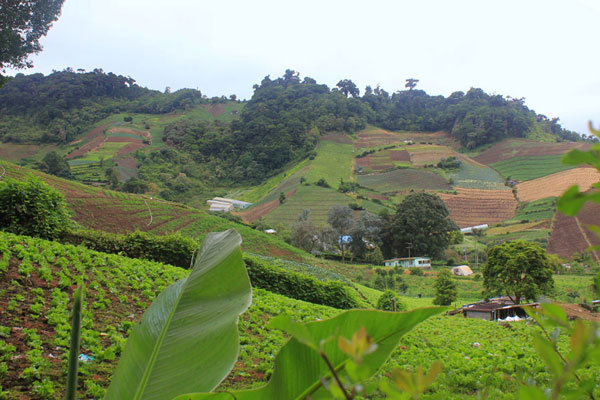Chiriqui has some of the most fertile land in Panama and all of Central America where we produce 80% of the veggies for our country. Even though we farm about every square inch of the mountains here, we cannot produce enough essential protein to feed the people in out nation, so we must import much of it. We do not have enough milk and we do not have enough high quality beef as evidenced by the recent run up in wholesale prices. My son consumes a gallon of milk in 3 days and it costs over $5 per gallon. Now that he is going to be 18, I a switching him to Panama, a local beer that cost half that, hah!
Seriously we must do something about this and the government needs to do more than provide farmers with cheap money. We still do not have a certified slaughter house here that would allow us to export beef even if we could produce enough. We have rudimentary dairy farms where maybe a 100 animals an hour might be a record milking vs 1,000 or more in concentrated dairy and modern milking facilities. Here is the article
Within the isthmus, Honduras has the lowest agricultural productivity, followed by, from the least to the most, Nicaragua, El Salvador, Guatemala, Panama, and Costa Rica.
Although the current global economic environment is favorable to the nations of Latin America and the Caribbean, specializing in the production and export of agricultural products, “Latin American agriculture is being forced to increase productivity in an environmentally friendly way in order to overcome natural resource constraints , environmental pressures, the consequences of climate change and volatility in international prices of the agricultural products it exports. “
An analysis of the topic by Lucydalia Castellón Baca in Laprensa.com, focuses on Nicaragua, but is applicable to all Central American countries, which are, as a whole, at the bottom of the lists in terms of Latin American agricultural productivity.
The article is based on the report Outlook for Agriculture and Rural Development in the Americas: 2013 A Perspective on Latin America and the Caribbean, published by the Economic Commission for Latin America and the Caribbean (ECLAC), the United Nations Organization for Food and Agriculture (FAO) and the Inter American Institute for Cooperation on Agriculture (IICA).
“… According to the document, sustainable growth in agricultural productivity, enabling future levels similar to those of developed countries, requires coherent and comprehensive long-term government policy, including the rational and sustainable use of natural resources, better use of biodiversity, promotion of technology, improvement of human capital, increased investment in agricultural research, facilitating access to credit, improving access to water and irrigation, providing more transparency in markets for raw materials and investment in infrastructure. ”
Source: laprensa.com.ni
